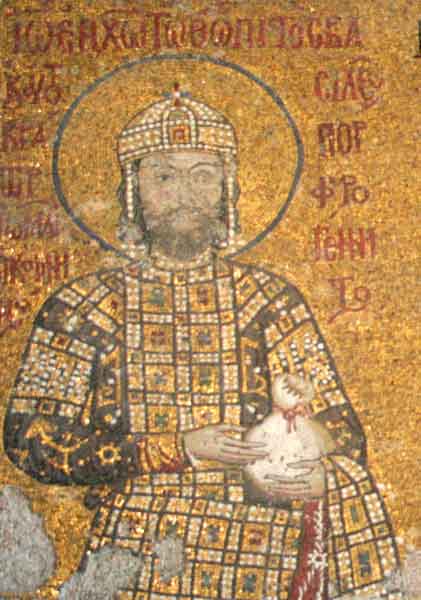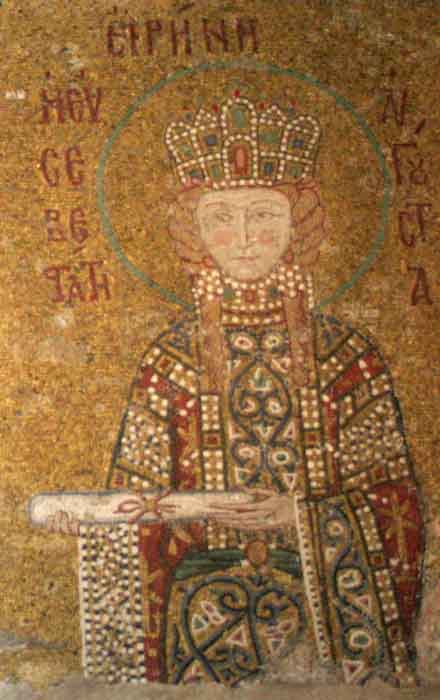|
|
 Mosaic of John II John II Comnenus (September 13, 1087 – April 8, 1143) was Byzantine emperor from 1118 to 1143. Also known as Kaloioannes (John the Beautiful), he was the eldest son of the emperor Alexius and Irene Ducaena. He succeeded his father in 1118. On account of his mild and just reign he has been called the Byzantine Marcus Aurelius. By the personal purity and piety of his character he effected a notable improvement in the manners of his age, and he devoted his reign to restoring the Byzantine Empire to its former extents, before the disaster at Manzikert in 1071. His various successes against the invading Petchenegs, Serbians and Seljuk Turks, whose progress in Asia Minor he reverted, along with his attempts to establish Byzantine suzerainity over the Crusader States in Antioch and Edessa, did much to restore the reputation of his empire, even if the Comnenian dynasty in hindsight gave Byzantium, torn apart by corruption and invasions, but a brief respite against disintegration. His only serious - but very telling - setbacks were against the Venetians, upon whose naval strength the empire was dependent after the breakdown of the Byzantine fleet in the 11th century. An effort to reduce their extensive privileges within the empire ended with a humiliating return to status quo, many Byzantine ports being plundered in the process. John the Beautiful John was known as Kaloiannis, 'John the Beautiful'. William of Tyre says that he was short and unusually ugly, with eyes, hair and complexion so dark he was known as 'the Moor'. The description Kaloiannis referred not to his body but to his soul. Both his parents had been unusually pious and John surpassed them. Members of his court were expected to restrict their conversation to serious subjects only. The food served at the emperor's table was very frugal and John lectured courtiers who lived in excessive luxury. Despite his austerity, John was loved. His principles were sincerely held and his integrity great. He never condemned anyone to death or mutilation. Charity was dispensed lavishly.
Piroska, or St. Eirene from a mosaic in Hagia Sofia. John married Piroska of Hungary, daughter of King Ladislaus I of Hungary. Their two eldest sons predeceased him, and he passed over the third son, Isaakios, in favor of the youngest, Manuel, who had shown great promise. John was accidentally poisoned by his own arrow during a wild-boar hunt on Mount Taurus, on April 8, 1143.
Death of John II Comnenus, crowing of Manuel I Comnenus, Manuscript Guillaume de Tyr Family John married Piroska in 1104; the marriage was intended as compensation for the loss of some territories to King Coloman of Hungary. She played little part in government, devoting herself to piety and their large brood of children. Piroska died on August 13, 1134 and was later venerated as Saint Eirene. John and Piroska had eight children:
See also John II Comnenus' Hungarian campaigns -------------------------------------------------------------------------------- Byzantine Emperor Retrieved from "http://en.wikipedia.org"
 |
|
|||||||||||||||||

